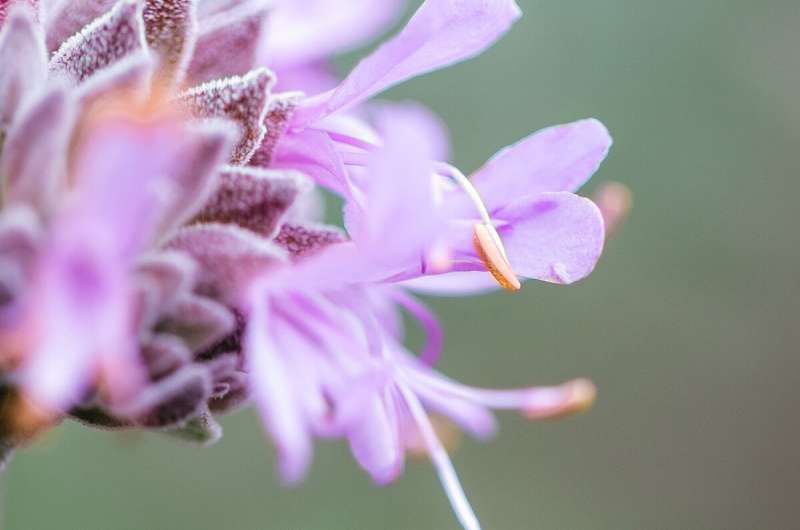Bee gut microbes have a division of labor when it comes to metabolizing complex polysaccharides

Honey bees are invaluable pollinators—cupids of the plant world facilitating the remixing of genes in the next generation of flowering vegetation. In return for their services, bees eat plant nectar and pollen. Nectar is an easily absorbable solution of sugars. But pollen contains plant cell walls, which have complex, branching chains of polysaccharides called pectin and hemicellulose. While these two polysaccharides can yield sugar monomers, it's only with the aid of specialized bacterial enzymes. Honey bees rely on their gut microbiota to produce these enzymes to break down polysaccharides. But scientists have wondered exactly how the microbial community carries out its helpful metabolism: who's responsible for what biochemical processes?
Now, an international team of researchers has identified the major metabolic roles of constituent microbes, publishing their findings in the Proceedings of the National Academy of Sciences. The team focused on the dominant bacterial clades shared between honey bee and bumblebee gut microbiomes.
Researchers found that pollen's pectin and hemicellulose are degraded mainly by just two clades: Gilliamella, which mostly resides in the bee's ileum, a structure analogous to the human small intestine; and Bifidobacterium, which dwells primarily in the rectum, downstream of the ileum and similar to the human large intestine. Both bacterial clades can metabolize hemicellulose and pectin. However, the two specialize to an extent. Gilliamella primarily degrades pectin. But not all strains of Gilliamella are capable of pectin metabolism. Bifidobacterium strains, on the other hand, are abundant in glycoside hydrolases, and are thus better adapted than Gilliamella to breaking down hemicellulose. But not all strains of Bifidobacterium are able to carry out this metabolic feat. For both clades, then, strains are variable in their abilities.
Zoomed out, what appears to be happening is a kind of movable feast being deconstructed as it goes through the honey bee gut. Early on, monosaccharide sugars can be absorbed, but the complex polysaccharides—the pectin and hemicellulose—are digested further along: first, the pectin, mainly by Gilliamella; then the hemicellulose, mainly by Bifidobacterium. The process is a division of labor by these bacterial groups. But why the strain variability? The authors think the reason may be that polysaccharide-degrading enzymes are secreted. It's like giving everyone a fork—all strains can potentially dig in, even if they were too lazy to produce the enzymes themselves.
One other finding that interested the authors was that an evolutionary analysis of Bifidobacterium strains in honey bees and bumblebees showed that strains in bumblebees more often lack the ability to break down hemicellulose. The authors think this might have to do with the differences in lifestyle: honey bees need ample sugar to make honey that they can eat in winter. Bumblebees, on the other hand, don't make honey; they hibernate in winter instead. So, evolutionarily, it might make sense that honey bees have a more efficient microbiome to harvest all the energy they can.
The results in the study were enabled by a number of in vitro and in vivo experiments, including collecting and analyzing the honey bee gut metagenome, which was done with the help of the US Department of Energy Joint Genome Institute.
More information: Hao Zheng et al. Division of labor in honey bee gut microbiota for plant polysaccharide digestion, Proceedings of the National Academy of Sciences (2019). DOI: 10.1073/pnas.1916224116
Honey bee gut metagenome available through, and annotated with, the Integrated Microbial Genomes with Microbiomes system: img.jgi.doe.gov/
Journal information: Proceedings of the National Academy of Sciences
Provided by DOE/Joint Genome Institute





















